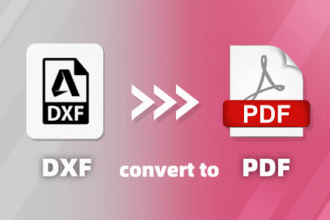The search for optimal grain accounting software starts with a close examination of your own company and operational requirements. Many grain operations are diverse in sophistication, from the family farm to the large commercial grain elevator and grain merchandising firm. Knowledge of the size of your operation, the volume of grain you handle, and the accounting hurdles you need to clear to run your business effectively confines software to fit your business model.
- Determining Major Accounting Capability
The foundation of any successful grain accounting solution is its fundamental accounting capability. Look for systems that have the ability to address generic accounting functions such as accounts receivable, accounts payable, general ledger management, and financial reporting. These fundamental capability features should be engineered to respond to the unique character of grain operations, including seasonal fluctuation in cash flow and commodity price volatility.
Core accounting capabilities must have automatic transaction processing, multiple entity accounting to accommodate multifacility operations, and complete audit trails that capture detailed records of all the financial transactions. The system must also allow alternative methods of payment and have flexible invoicing with the capability to accommodate varied demands of buyers and sellers of grains.
- Inventory Management Capabilities
The appropriate grain inventory management system should be capable of tracking and monitoring grain inventory levels in real time across different locations and silos. It should handle multiple grains, grades, and qualities and maintain an account of the movement, level, and valuations of the inventory. Functionality is critical in facilitating profitability as well as sufficient compliance with other regulatory functions.
Look for inventory functions that accommodate real-time updating, automatic reorder levels, and in-depth reporting of inventory turnover and ageing. The program should also accommodate different measurement units, moisture content adjustments, and quality factors that affect grain value and marketability. Integration with scale systems and other measuring devices can also be utilised to enhance accuracy and efficiency.
- Contract and Pricing Management
Grain operations are in the form of complex contracts among producers, buyers, and other entities that require careful control and monitoring. Quality grain accounting software must include contract management features that are feature-rich and allow forward contracts, basis contracts, and spot purchases or sales. Contract terms, delivery calendars, pricing mechanisms, and settlement terms should be monitored by the system.
Price management activities must be capable of supporting multiple price methods such as flat price, basis price, and minimum price contracts with participation upside. The system must be capable of connecting to commodity price services to take advantage of real-time market data and to automate the price calculation based on contract terms and available market conditions.
- Integration with External Systems
Grain operations today are founded on many systems and devices that need to operate in concert with one another. Inventory management computer programs for grains need to be interfaced with scale systems, laboratory information management systems, transportation management systems, and bank systems. These interfaces eliminate keying by hand and errors and optimise total operating efficiency.
Seek software that possesses Application Programming Interface functionality or internal links to standard systems implemented in the grain business. The integration is crucial in ensuring data exchange seamlessly among different operational components and delivering an overview of business performance across operations.
- Reporting and Analytics Features
Long-term reporting capability is required to support well-informed business decisions and regulatory compliance. The good grain accounting system must produce standard financials such as profit and loss statements, balance sheets, and cash flow reports tailored specifically for operations in grain. Operational reports such as inventory positions, contract summaries, and performance measures must also be offered by the system.
Sophisticated analytics capability allows you to discover trends, automate operations, and support strategic planning. Look for software with personalised dashboards, key performance indicators, and forecasting features that enable you to view positions in the market and make price, buy, and stock management decisions forward-looking.
- User Interface and Ease of Use
Grain operations require software that functions and is user-friendly. It should be rationally designed in a way that facilitates users moving from one function to another smoothly and retrieving information comfortably. Consider how the software organises information and if the workflow accommodates your operation procedures.
Learning curves and training time vary considerably among various grain inventory management software solutions. Look for materials for training, support materials, and user guides through which your personnel will be able to learn the system. Sophisticated software will create errors, inefficiency, and user resistance.
- Growth Accommodation and Scalability
Your grain company can grow in the future with increased demand for software to manage increasing transactions, more sites, and more capabilities. Choose grain accounting software created on modular architecture so that you can add functionality and features as your firm expands. Scalability will pay for your investment in software as your operation expands.
Think about how the software manages multiple entities, consolidated reporting, and user management for big organisations. The system must keep going as lots of data are entered into it and must be able to manage more integration that will be required as your operation expands and gets more sophisticated.
- Compliance Features and Security
Grain operations handle sensitive financial information and fall under several industry standards and regulations. Security controls must include user authentication, role-based access control, encryption of the data, and extensive audit logging. These security controls protect sensitive information and allow only those with appropriate rights to see specific data and functionality.
Compliance features must be able to meet business requirements such as warehouse receipt rules, commodity report rules, and financial reporting rules. Inventory management software must have the ability to provide tools and reports that support compliance procedures and reduce opportunities for regulatory non-compliance.
Conclusion
Software expenses are not just the cost of a one-time license but include fees for implementation, training, maintenance, and support. Prepare a comprehensive breakdown of costs considering all these parameters for the system’s planned life cycle. Balance these with the returns you intend to gain through enhanced efficiency, fewer errors, sounder decision-making, and increased control of operations.
Keep in mind also the tangible sense of cost savings through manual labour and fewer errors and the intangible sense of improved customer service and improved management information. A correct return on investment analysis will guarantee your choice of grain inventory management software to be worth the investment and will be able to support long-term business success.

















